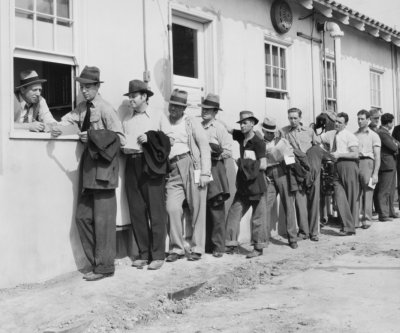
The price of December gold jumped $16.70 an ounce or less than 1% to close at $1,796.50 on Thursday after the European Central Bank said its version of quantitative easing – where cheap money floods markets to keep interest rates low – was having success in calming markets.
The metal touched an-intraday high of $1,798 shortly before the close , but could not breach the psychologically important $1,800 level.
US employment data out on Friday could be just what is needed to push the yellow metal into uncharted territory for 2012 – at the end of February traders also tried and failed to push gold above $1,800.
Consensus forecast is for an increase of 118,000 in non-farm payrolls – a disappointing number is bad news for the dollar and increases gold’s allure as an inflation hedge and storer of wealth amid currency depreciation.
Gold closed out the September quarter with its biggest quarterly gain since 2010 as QE3 Infinity – as the open-ended third round of quantitative easing in the US has been dubbed – weakens the dollar.
QE has been a massive boon for gold.
The Fed’s near-zero interest rate policy and bond purchases under QE1 kicked off on 16 December 2008. On 15 December 2008 an ounce of gold cost $837.50.
That’s a more than 111% improvement for the precious metal on the back of QE1 and QE2 which followed in August 2010.
Another of the Fed’s programs to keep interest rates low, Operation Twist, which started in September 2011 has also boosted the price of gold.
The gold price has taken a few hard knocks from 2011’s record levels and the spikes downward have all been thanks to actions or pronouncements by chairman Ben Bernanke and the Fed.
At the same time volatility in the gold price has increased dramatically.
At the start of April for instance gold dropped some $60 an ounce in a single session when Fed minutes appeared to indicate QE3 was off the table and its policy of zero interest rates may be coming to an end sooner than previously thought.
The same thing happened on June 7 when gold dropped $50 to under $1,600 an ounce in a couple of hours after Bernanke delivered “anti-climactic” testimony to the US Congress.
That was not the first time traders got cold feet after breaking an important psychological level.
A similar pattern was followed in the days after the metal reached a record high above $1,900 an ounce in August 2011. The yellow metal slid for two days after hitting the record, losing $105 or 5.6% in value in a single day.
In 2011 trading in gold was the most volatile since 1980 with the gap between the year’s highs and lows coming in at close to $600 an ounce or a 32% range.
In 1980 the spread was even greater at more than 40% and followed the 21 January 1980 record of $850 a ounce set after a spike in oil prices following the Iranian revolution and Russia’s invasion of Afghanistan.
At the time gold also fell precipitously after setting the record – within two days it fell back to under $700 starting a bear market that lasted almost three decades.
Gold breached $850 again at the start of 2008, but in inflation adjusted terms the 1980 price is still the highest ever – gold would have to hit some $2,400 an ounce to set a record in today’s money.